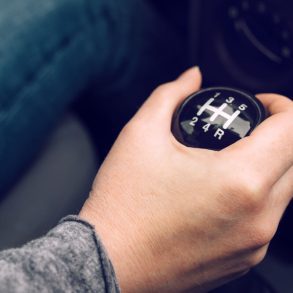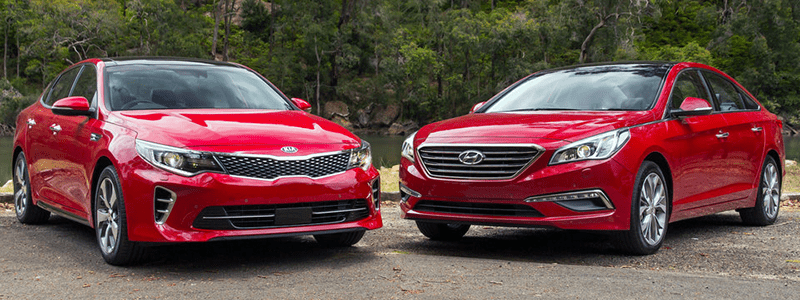 After looking at the Success stories of 2017 in the US, it’s time to look at the other side of the medal: who put in disappointing performances in the US in 2017. Coming soon – our predictions for 2018.
After looking at the Success stories of 2017 in the US, it’s time to look at the other side of the medal: who put in disappointing performances in the US in 2017. Coming soon – our predictions for 2018.
1. Korean brands
Hyundai and Kia hit a roadblock in 2017 after years of growth in the US market. Hyundai had enjoyed 8 consecutive years of sales growth, increasing its sales over 90% from just over 400,000 units in 2008 to 768,000 in 2016, and Kia more than doubled its sales from 273,000 in 2008 to 647,500 in 2016. But in 2017 that growth not only stalled but turned into big losses, especially at Hyundai. The brand was down by 100,000 sales in one year, losing half a percentage point of market share to drop below 4% for the first time since 2008, even when we include Genesis sales, as the company split off the Genesis and Equus luxury sedans from the mainstream brand in 2016. Kia lost 58,000 sales and a quarter of a percentage point of market share, back to 2013 levels. At least the decline for the brands is not as sharp as in China, where the brands are down 32% and 46% respectively.
The biggest reason for the decline is the fact that especially Hyundai has relied for way too long on its budget sedans when the market was moving away from those models. In 2016 the share of crossovers for the two brands was 30% or less, and because of the decline in sedan sales that grew to about 35% in 2017, still well below the industry average. Hyundai’s two crossovers Tucson and Santa Fe each hit record annual volumes for the nameplates, but the Accent lost 26% to below 2012 levels, and the Sonata lost 34% to an 8-year low. At Kia, the trend is similar but less extreme. Thanks to the addition of the Niro hybrid crossover, total crossover sales for the brand slightly improved, while its sedans all lost double digit volume with the exception of the Forte and the low volume Cadenza.
The Genesis brand was launched in 2016 and had its first full year of sales in 2017 with 20,600 sales. The G80 dipped to the model’s lowest annual sales since its launch at 17,350 sales including the last remaining Hyundai Genesis sedans, but the model has already been on the market virtually unchanged since 2013. In contrast, the G90 was completely overhauled when they renamed it and sold more than the Hyundai Equus ever did. The Genesis brand also desperately needs crossovers in order to establish itself, and with no less than 3 of such models on the way it seems like the Koreans have finally started to listen to the market.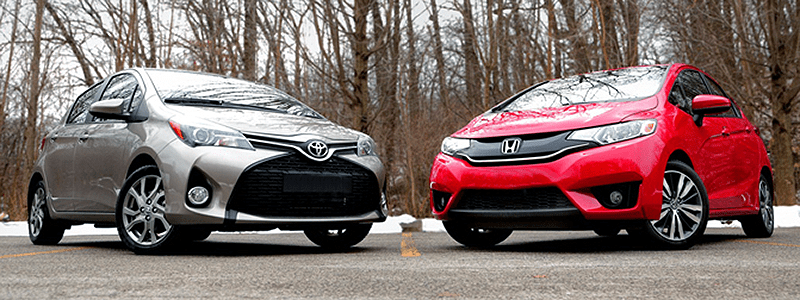
2. Small and subcompact cars
Yes, small cars again, just like last year. They just can’t seem to get a break. Of course it doesn’t help that gas prices remain low, but these are be the only segments that shouldn’t suffer from cannibalization by crossovers, yet 20% declines for both the minicar segment and the subcompact segment are significant negative swings from -11% and -3% in 2016 respectively. Lack of new product is one of the main reasons for these segments to decline, causing a negative spiral of reduced volume leading to less potential profits leading to fewer investment and so on. For example, Ford is not bringing the new generation Fiesta to the United States and Chevrolet may cut its Spark and Sonic after the current generation as it winds down its South Korean operations. Mazda never even bothered to bring the new generation Mazda2 to the US, despite selling the model in Canada. And the Smart Fortwo has been turned in to an electric-only model which will reduce its volume even further. Combined, these two segments now account for just 3% of the total US market, which is the lowest in the last decade.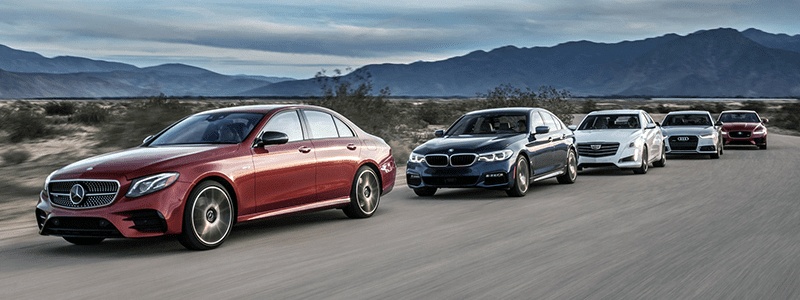
3. Luxury sedans
Among first and second tier luxury brands, only Audi and Infiniti improved their sales in 2017, as did Tesla. And that’s despite a never ending rise in luxury crossover sales, so the decline is mostly due to sedans. Sedans in general had a pretty miserable year as written in our article on the successes of 2017, but this is even more apparent in the luxury segment, with only a handful of luxury sedans gaining sales, and all of them because they’ve either just been renewed or because 2016 was their first partial year of sales. Let’s look at each brand in alphabetical order:
- Acura: all sedans are down, while crossovers are stable
- Audi: the all-new A5 is the only car model to improve, while all crossovers are up as well
- BMW: the all-new 5-Series is the only sedan to improve, 3 out of 5 crossovers are up as well
- Cadillac: the CT6 is the only sedan to improve (on its introduction year), all others decline by 25% or more. The XT5 crossover now outsells all sedans combined
- Infiniti: all sedans down, 4 out of 5 crossovers are up
- Jaguar: the XE is the only sedan to improve (on its introduction year), the XF and XJ decline by 29% or more. The F-Pace crossover now outsells all sedans combined
- Lexus: all sedans are down by double digits, all crossovers are up, except for a <1% decline of RX
- Lincoln: the Continental is the only sedan to improve (on its introduction year), the MKT is the only crossover to decline
- Maserati: all sedans down by 20% or more, Levante is just 100 sales away from becoming the brand’s best selling model
- Mercedes-Benz: the C-Class and E-Class are up by single digits, helped by coupe and convertible versions, the CLA and S-Class are down by double digits, while 4 out of 5 crossovers up.
- Porsche: the all-new Panamera is up, the Cayenne is down but will be replaced in 2018, the Macan is up
- Tesla: the Model S is down, while the Model X is up
- Volvo: the all-new 90-Series is up, while the 60-Series is down by double digits, the XC60 is up and the XC90 is down by single digits
In total, luxury sedan sales were down to below 900,000 in 2017, the third-lowest volume since 1998, besting only the crisis years of 2009 and 2010.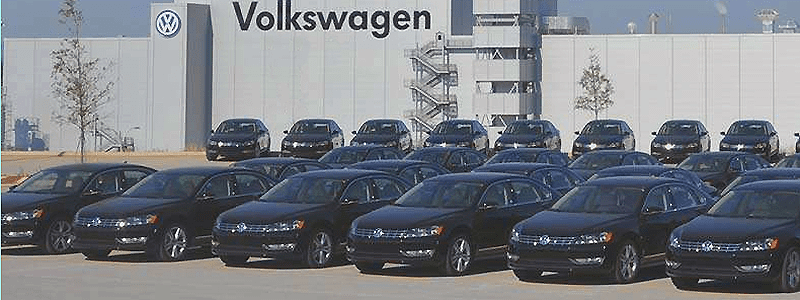
4. Volkswagen
We’ve also featured VW in our successes of 2017 article, because despite all of its troubles of scandals, an aging line-up that’s not in touch with the needs of the current American car buyer and a stop-sale of its trademark diesel engines, its sales didn’t suffer as badly as you’d expect and the brand even rebounded in 2017. It finally got serious about crossovers and the first months for both the Atlas and the new Tiguan look promising. However, looking at how its core car models performed, the brand still has its work cut out for it. Its (former) best sellers Jetta and Passat have been in non-stop decline since 2011 and 2012 respectively, and the Beetle since 2013. Sidenote: the Golf actually improved in 2017 thanks to the addition of the Alltrack version. All these models have been around since 2012 or earlier and there’s nothing new in the product planning except for a replacement to the Jetta, which looks all but revolutionary in design.
But the biggest disappointment we have with Volkswagen is the long time it took them to get their act together after the diesel scandal broke. It took them way too long to take responsibility and own up to their mistakes, whether deliberately or not. It also took them way too long to find a solution for the affected cars (and customers!), as they should have done everything in their power to “make things right” as quickly as possible to stop the negative press and restore faith in the company. Instead, it just seemed to drag on forever while the brand image continued to suffer. Now that they’ve finally turned that page, we’ll have to see how quickly Americans can forgive and forget, but it should’ve all been handled much quicker.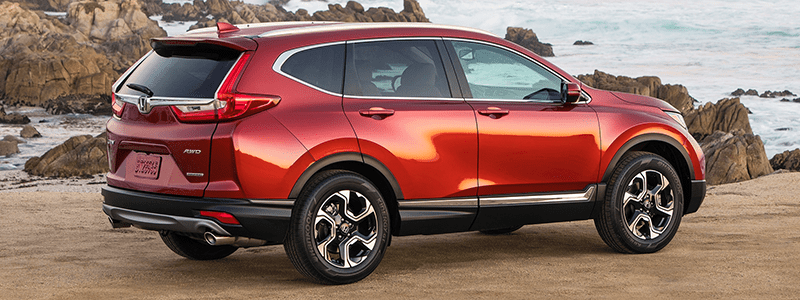
5. Honda CR-V
The CR-V set a new annual sales record for the nameplate for the sixth year in a row, at almost 378,000 sales and became Honda’s best selling model for the first time ever, so how what is it doing in this list of disappointments of 2017? Simple: it lost its title of best selling compact crossover in the United States and dropped to third place behind the Toyota RAV4 and Nissan Rogue. And while the CR-V was all-new for 2017, while both the RAV4 and the Rogue have been around since 2013. Granted, the Rogue was helped by the addition of the Rogue Sport model, which really should be separated in the sales tables, but unfortunately Nissan North America doesn’t do that. The new generation CR-V should have been able to maintain its lead over its rivals, but instead this was the first time since 2005 that Honda does not top the charts of this segment.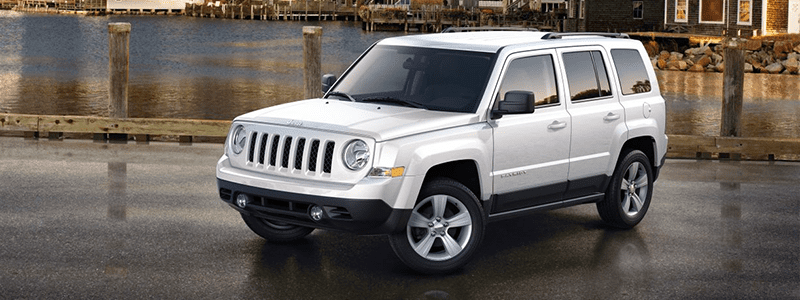
Why not Jeep?
Looking at the 2017 sales charts, one may come to wonder: “Why didn’t you nominate Jeep as one of the disappointments of 2017?” And we could perfectly understand that question, as the brand was the biggest loser in the top-10 with a double digit decline and 100,000 lost sales, despite America’s love affair with crossovers and SUVs. Jeep should be perfectly positioned to benefit from this trend, but that doesn’t show on its 2017 scorecard. So on the surface it would be the perfect candidate for this list, but when digging a little deeper we should conclude that Jeep’s decline is more due to a decline in sales to daily rental fleets, which are mostly unprofitable, reduce resale values of specific models and therefore lead to higher monthly lease payments for retail consumers, and potentially harmful to brand value. Especially the Patriot was a fleet favorite, and this was the reason why it peaked in its 9th and last year on the market before production ended in late 2016. Fleet sales of the Cherokee were greatly reduced as production of the model was moved to another plant, temporarily reducing supply and resulting in a 15.7% decline in sales for the model. But the brand’s two best sellers, the Grand Cherokee and Wrangler, remained pretty stable in 2017, despite the former being launched in 2011 and the latter in 2006 with a new generation being launched at the end of the year. With those factors in mind, Jeep actually didn’t do too bad and it’s great news that FCA finally seems to have started prioritizing profits over volume.







